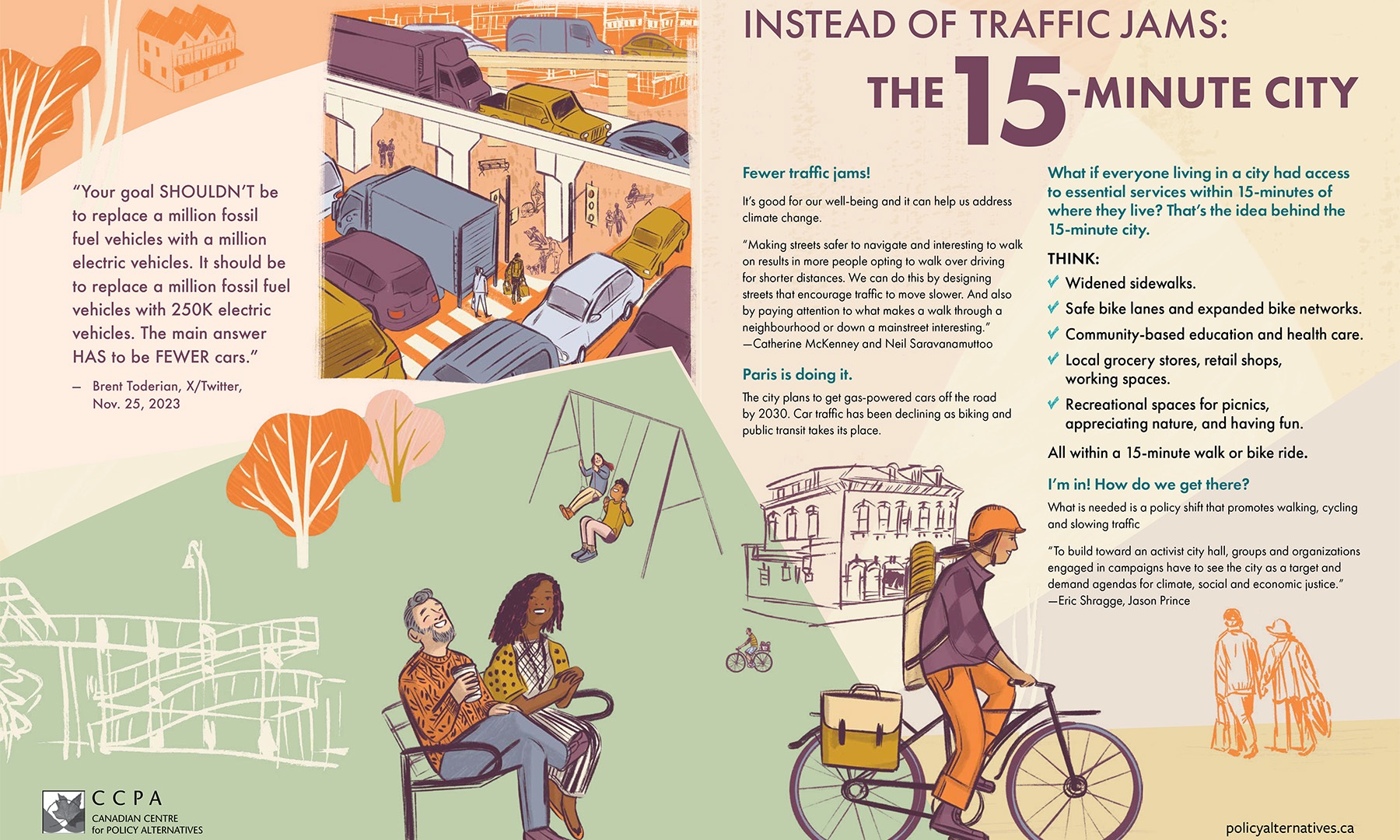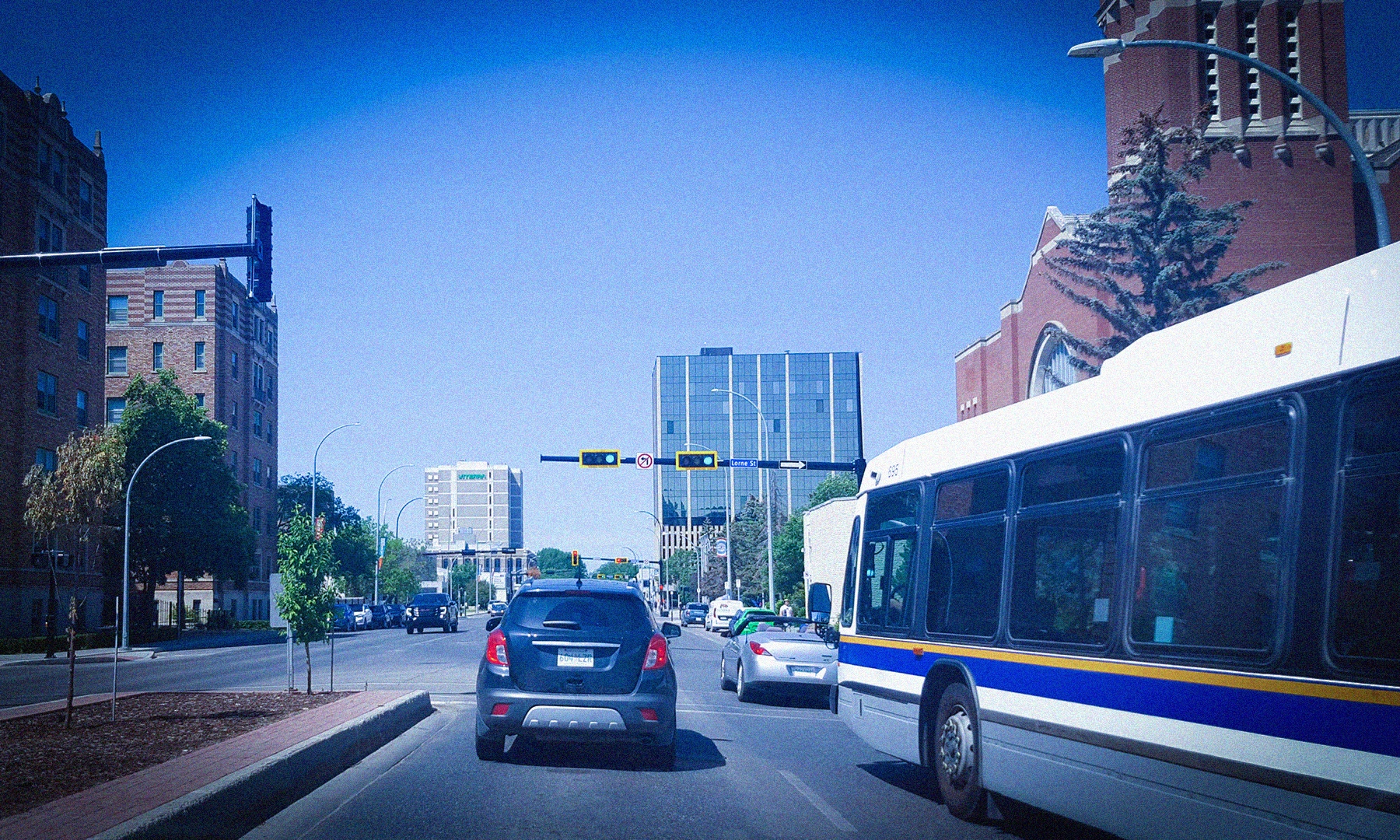When I was living in Edmonton, I managed to snag one of the (relatively) rare apartments in that city where you could walk to the grocery store within a few minutes.
It wasn’t a particularly pleasant walk—it meant trudging through an enormous, desolate parking lot after crossing a high-speed, six-lane collector road. I was, generally, one of only a small handful of pedestrians—in the city’s densest neighborhood, only a few blocks from downtown.
The few other pedestrians, often, were drawn from the city’s rapidly growing unhoused population. These folks—my neighbors—lived with constant police harassment, often in encampments that are subject to periodic demolition by municipal authorities.
One day, I returned home and found a note slipped unceremoniously under my door. My rent was going up by $300 per month. On the government of Alberta’s website, it makes sure to specify that “there is no limit on the amount by which the landlord may raise the rent.”
None of these issues are unique to Edmonton. They exist, to varying degrees, in every city in North America. In fact, Edmonton has taken some important strides in the past decade to improve its urbanism— removing legal requirements to build massive amounts of parking, legalizing denser housing options across the city, building new rapid transit. But it does raise the question: why do our cities look and behave the way they do—and how do the way our cities are designed influence our relationship to the place that we live, and each other?
Despite its mythos as a frontier settlement, Canada is a deeply urbanized country. Over 80 per cent of the population lives in cities. While that statistic is somewhat misleading—municipalities that we would call suburbs are technically cities—it reflects a profound reality of a move away from rural life. New arrivals to Canada, the uncontested driver of population growth, are concentrated almost exclusively in urban areas with over 100,000 people—which means that the rate of urbanization is only increasing.
City dwellers’ relationship to the place that they live is profoundly shaped by public policy. Will a resident spend nearly $13,000 per year (the Canadian average) on car ownership or be able to use public and active transportation to get around? Can a landlord evict a tenant to turn their apartment into a permanent unregulated hotel on a short-term rental platform? Does a tenant have the legal ability to fight a rent increase? Does the police force eat up the majority of the city’s budget? What happens to a person who falls on hard times and finds themself living in the street? How far away is the nearest park or green space? How safe is it for children to walk to school? Can an elderly person have autonomy after they lose their ability to drive? Will the high-polluting factory cause children in the poor neighborhood nearby to have higher rates of asthma?
All of these questions are the direct result of public policy. From the width of the lanes on the road, to the amount of cops on the street, to the cost of rent, policy makes and remakes cities. That process is long, but it is also deeply and intimately felt by residents.
What, then, might a truly democratic city look like? What might it look like for the cities we live in to respond to the crises of the 21st century—a burning climate, runaway inequality, rising fascism?
We don’t need to start from scratch in imagining the answer to that question. Across Canada—and beyond—social movements are organizing at the city-level to win real, material change to the places that they live.
As cities continue to rapidly expand, the way that they will look in a few decades will likely be unrecognizable to us today. And the seeds of those changes are being planted now. In the lines of legislation at different levels of government, in handshakes with lobbyists, in pressure campaigns by organized neighbours—we are, right now, planning the cities of the coming decades. Let’s take our task seriously.


